Simplefoam Time Step Continuity Error is Blowing Up
- You must be logged in to reply to this topic.
Source: https://forum.ansys.com/forums/topic/residuals-are-stable-and-dont-decrease-by-iterations/
Walaa
Subscriber
why the residuals may stay almost stable ? that will not make a convergence right ?
where might the problem is ?
DrAmine
Ansys Employee
Please refer to Judging Convergence subchapter in the Fluent' User's Guide. At which level are the residuals stalling and what about imbalances and monitor points?
Walaa
Subscriber

I didn't made monitor points !!, and what is the imbalance point ?
my residuals as shown fluctuated at the same range !
DrAmine
Ansys Employee
Okay I see. Imbalances are referring to scrutinize whether the overall continuity and fluxes are conserved and not and are accessible in a general form under Flux report. Are you expecting reversal flow at your outlet?
Increasing number of iterations per time step is not a good idea.
Moreover the backflow quantities for turbulence seem to be causing convergence issues. Please summarize your case in order to provide assistance. I have a feeling that your case is not properly setted up
Keyur Kanade
Ansys Employee
Hi,
Just to add, please insert images of your set up as well as of mesh. This will help us to understand your problem more clearly.
Regards,
Keyur
Rob
Ansys Employee
I'd also look at your turbulence boundary inputs, and (probably) increase the turbulent viscosity limiter value by a few orders of magnitude once you've confirmed the bc's are sensible.
In terms of the convergence, look at the flow velocity and cell size. Divide cell (edge) size by velocity and then that number by 10. This is a good starting point for a time step. You really need to converge each time step to get a physically sensible result.
As an aside, are you using the University system? You may need to refine the mesh near the free surface and the student licence may struggle with the cell count.
Raef.Kobeissi
Subscriber
your simulation looks like setup incorrectly or the mesh is in bad shape. 20,000 iteration / time step is an exaggeration. Can you please provide more information about your model?
Walaa
Subscriber
Thanks for all of you for cooperating, i am uploading screenshots for all the steps now
Walaa
Subscriber

Walaa
Subscriber

Walaa
Subscriber

Walaa
Subscriber

Walaa
Subscriber
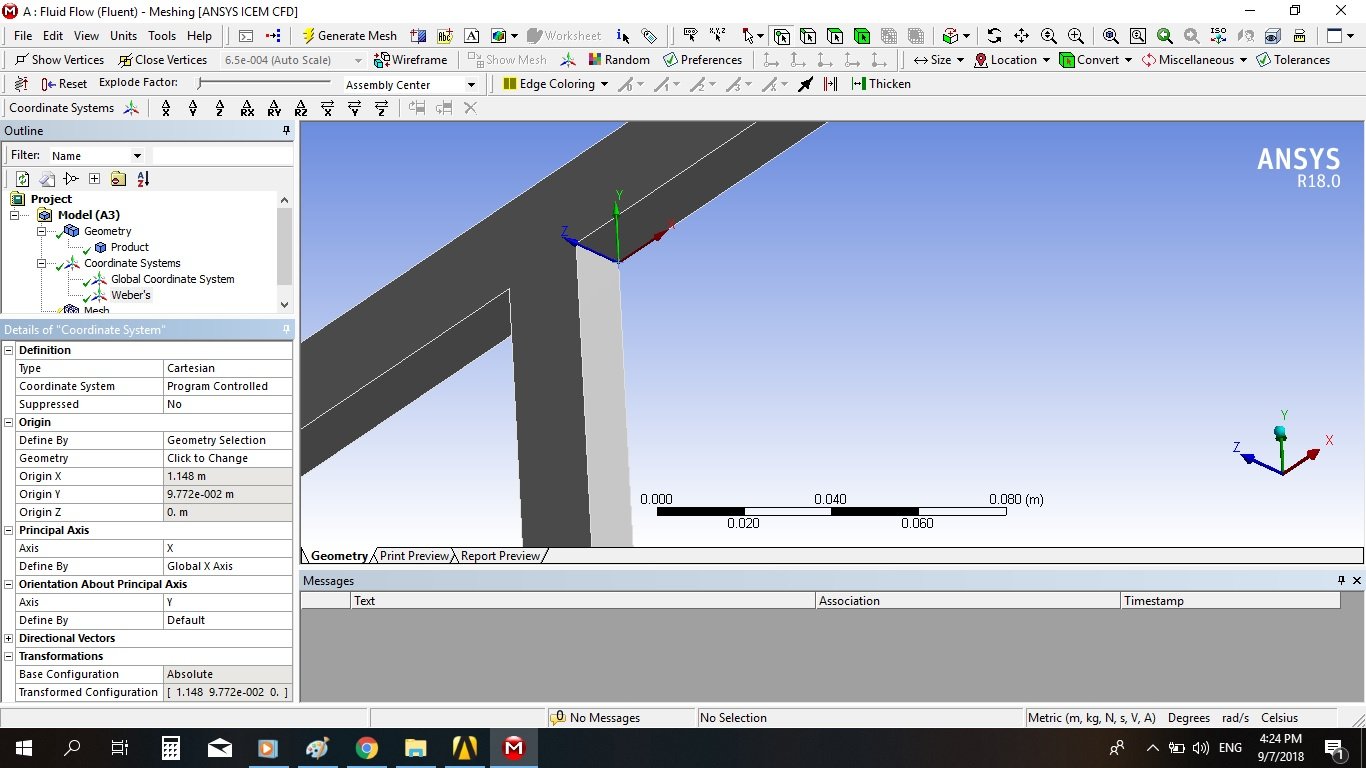
Walaa
Subscriber

Walaa
Subscriber

Walaa
Subscriber

Walaa
Subscriber

Walaa
Subscriber

Walaa
Subscriber
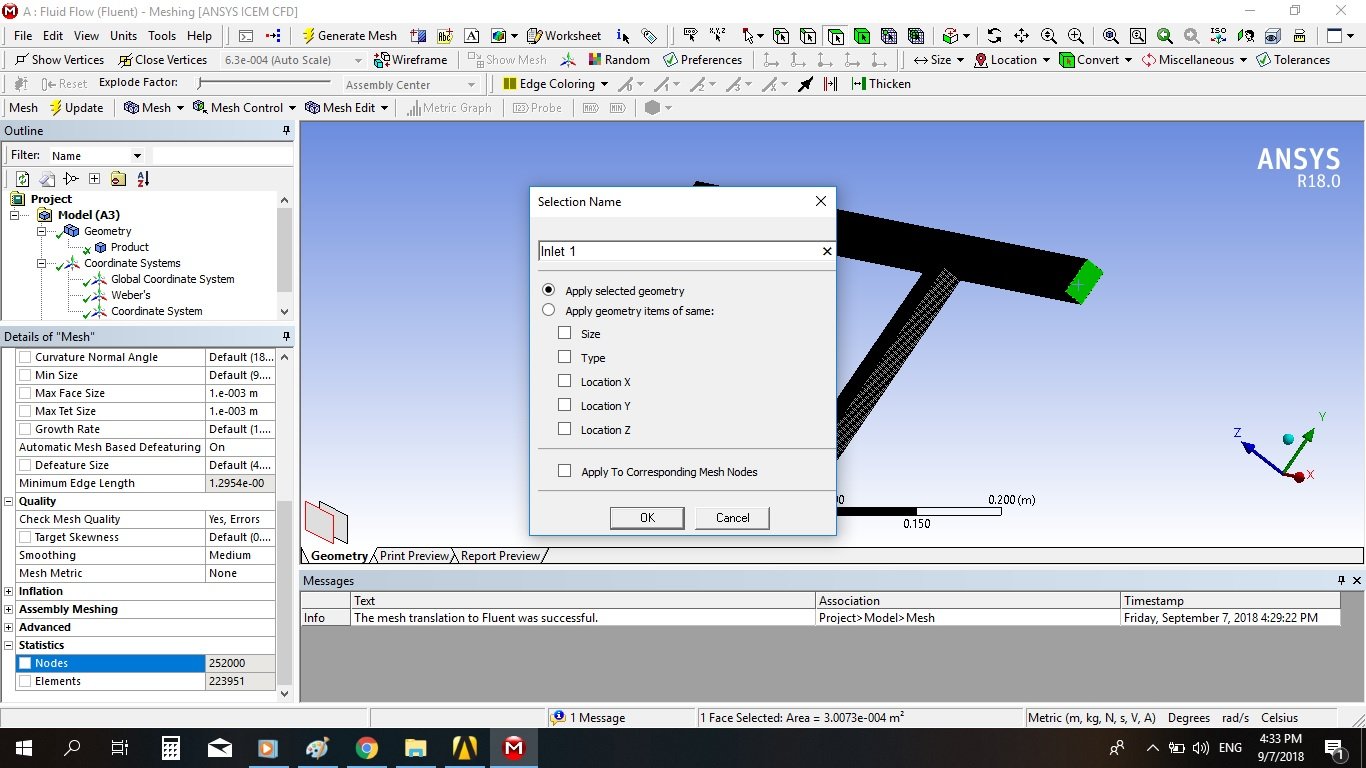
Walaa
Subscriber

Walaa
Subscriber

Walaa
Subscriber

Walaa
Subscriber

Walaa
Subscriber
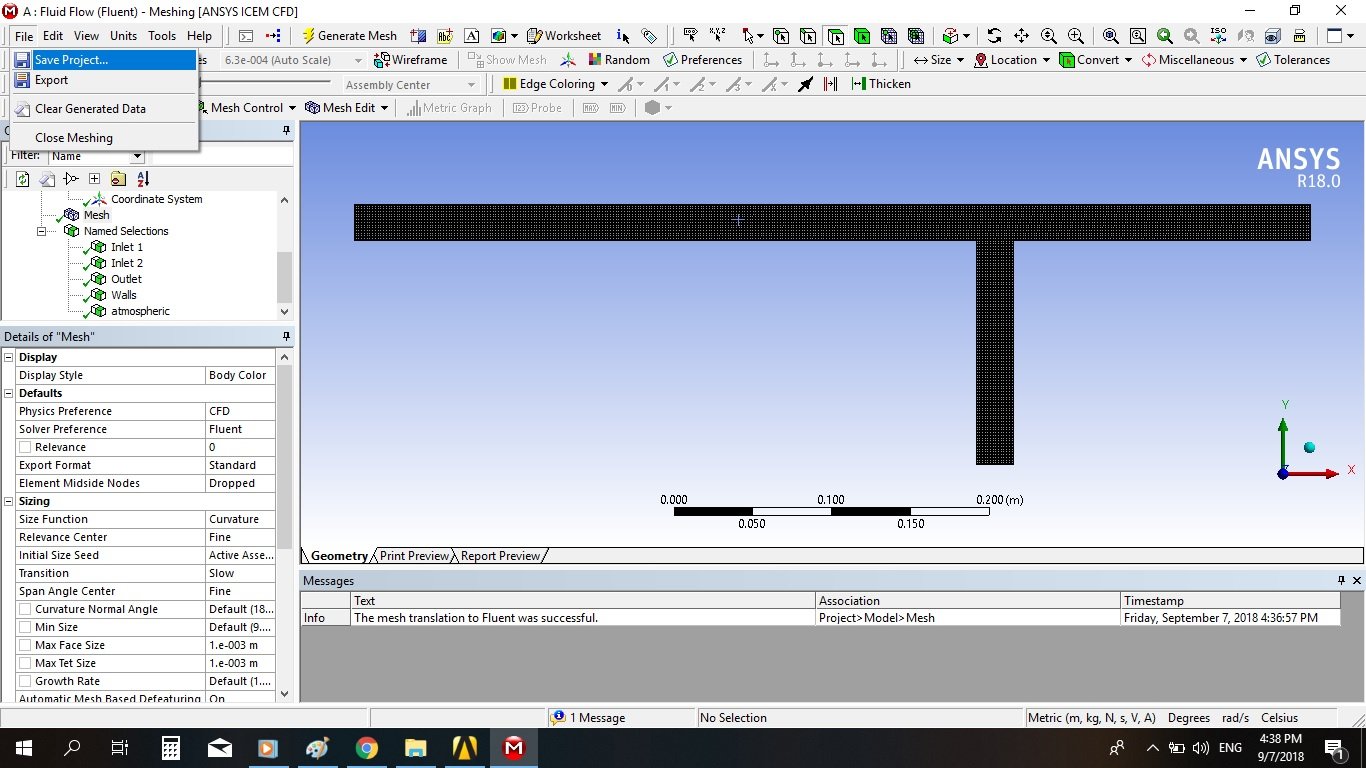
Walaa
Subscriber

Walaa
Subscriber
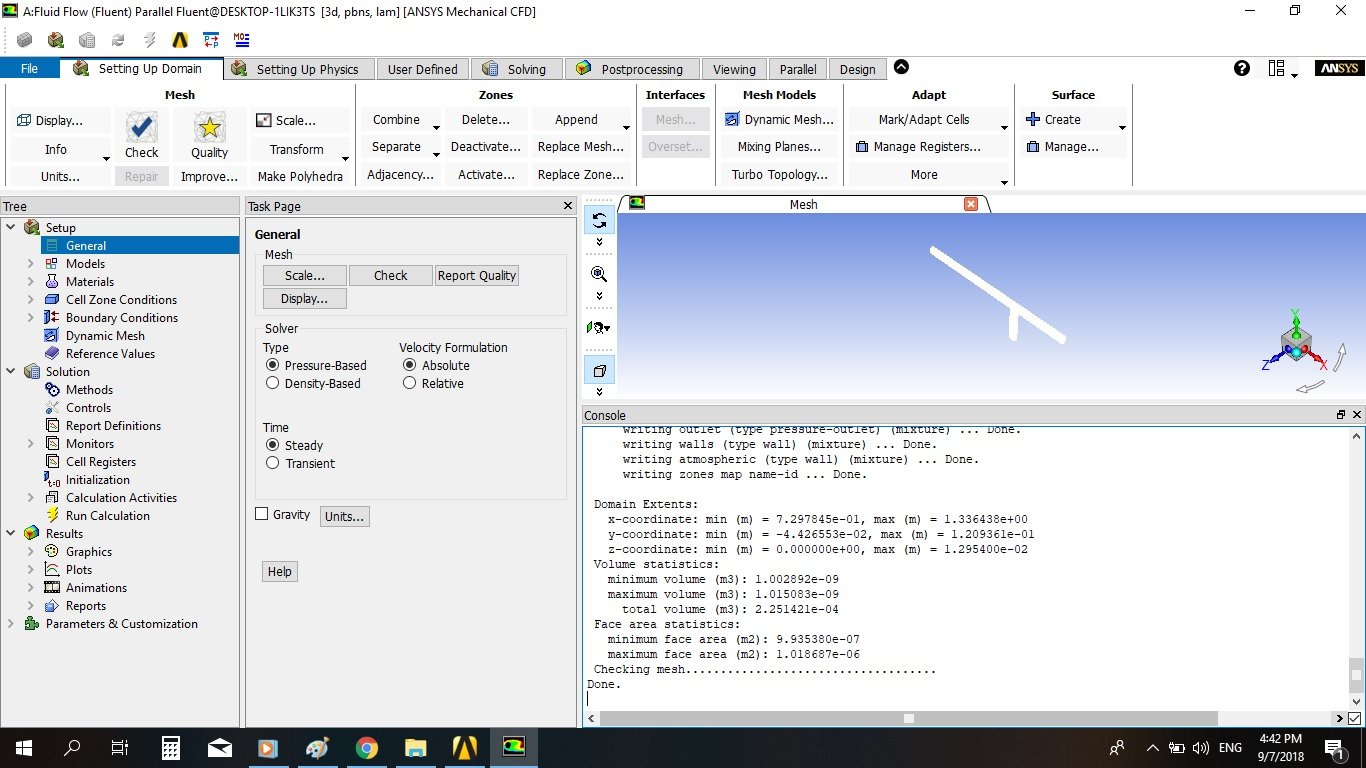
Walaa
Subscriber

Walaa
Subscriber

Walaa
Subscriber

Walaa
Subscriber
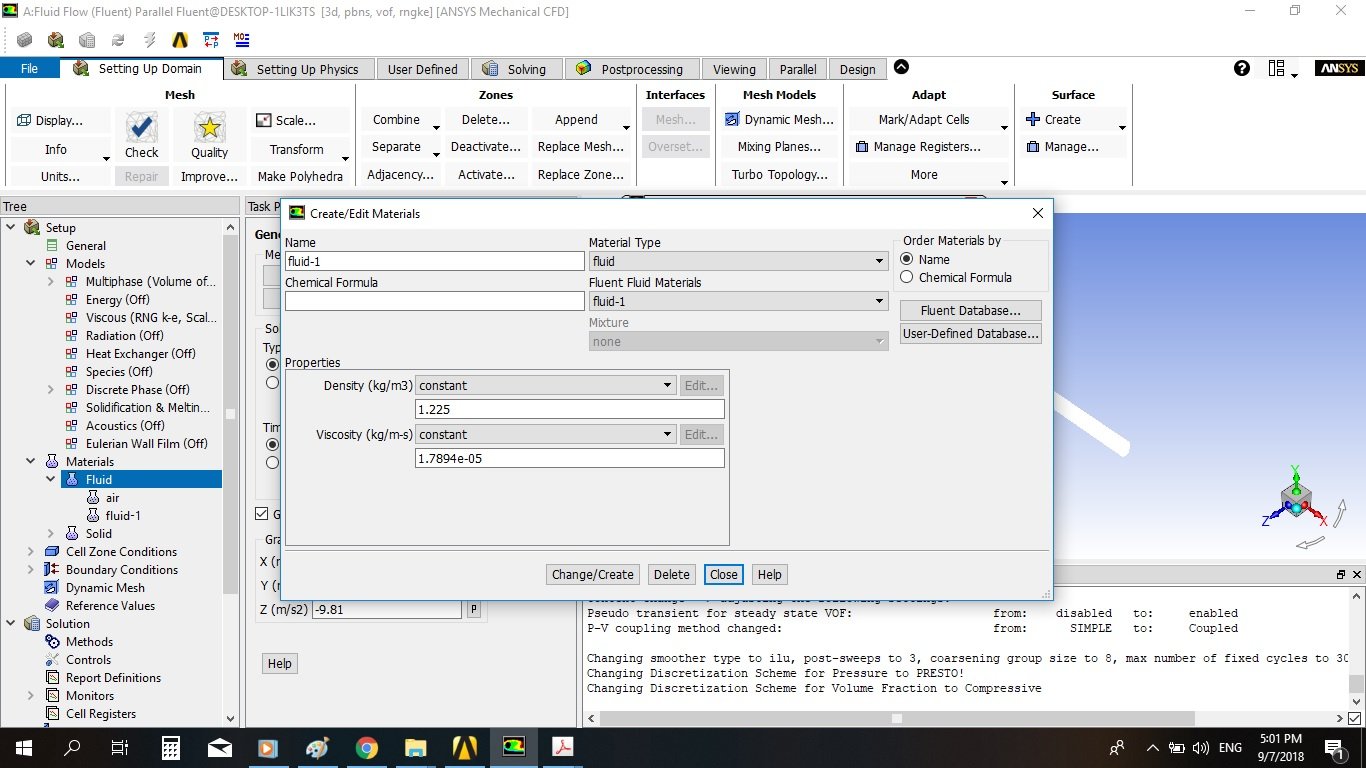
Walaa
Subscriber

Walaa
Subscriber

Walaa
Subscriber

Walaa
Subscriber
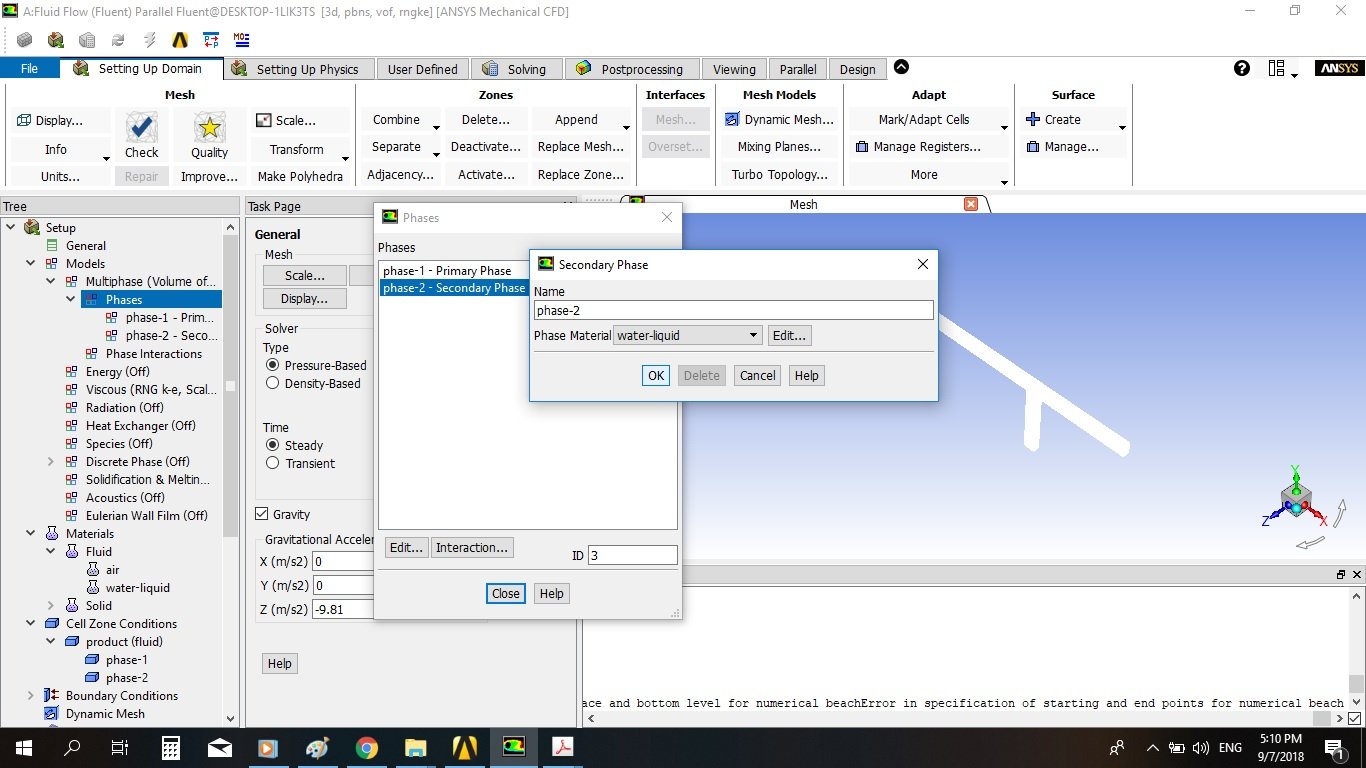
Walaa
Subscriber

Walaa
Subscriber

Walaa
Subscriber

Walaa
Subscriber

Walaa
Subscriber

Walaa
Subscriber

Walaa
Subscriber

Walaa
Subscriber

Walaa
Subscriber
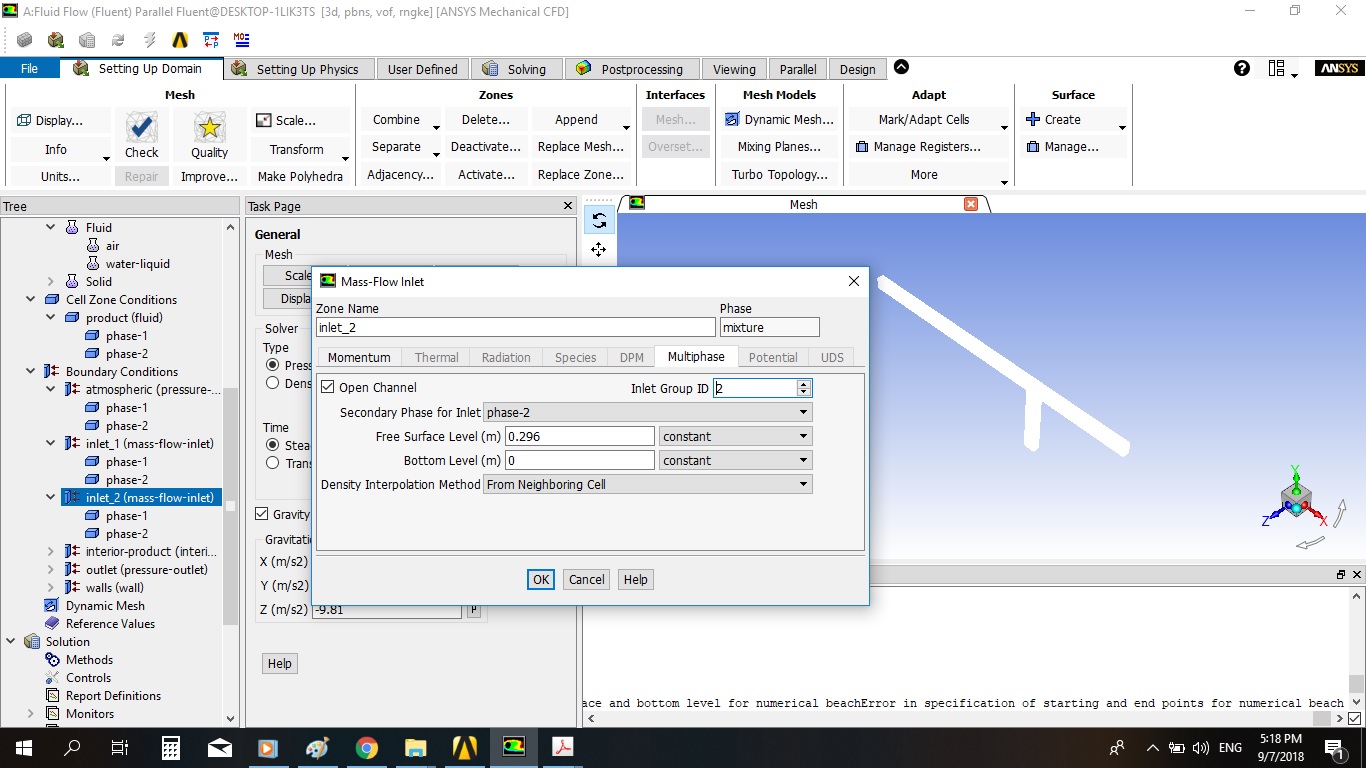
Walaa
Subscriber

Walaa
Subscriber

Walaa
Subscriber

Walaa
Subscriber
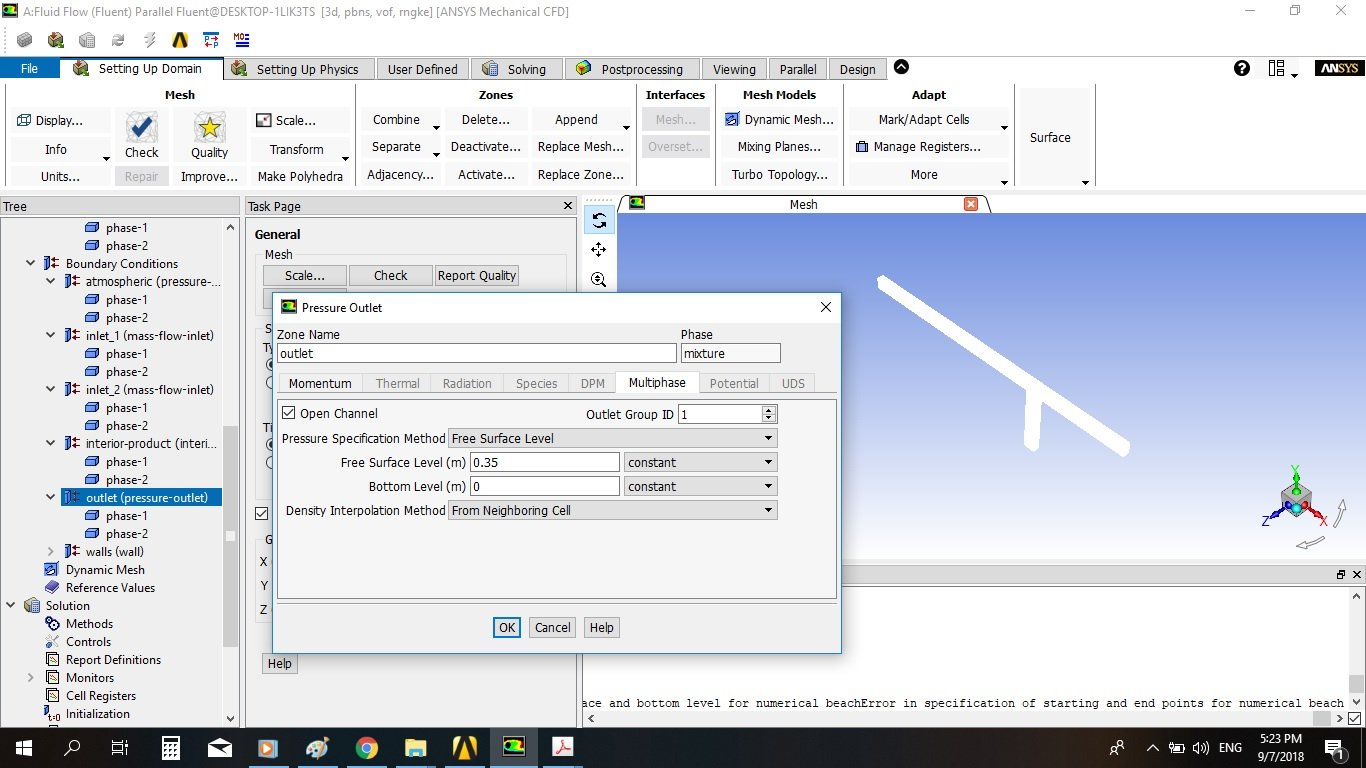
Walaa
Subscriber

Walaa
Subscriber

Walaa
Subscriber
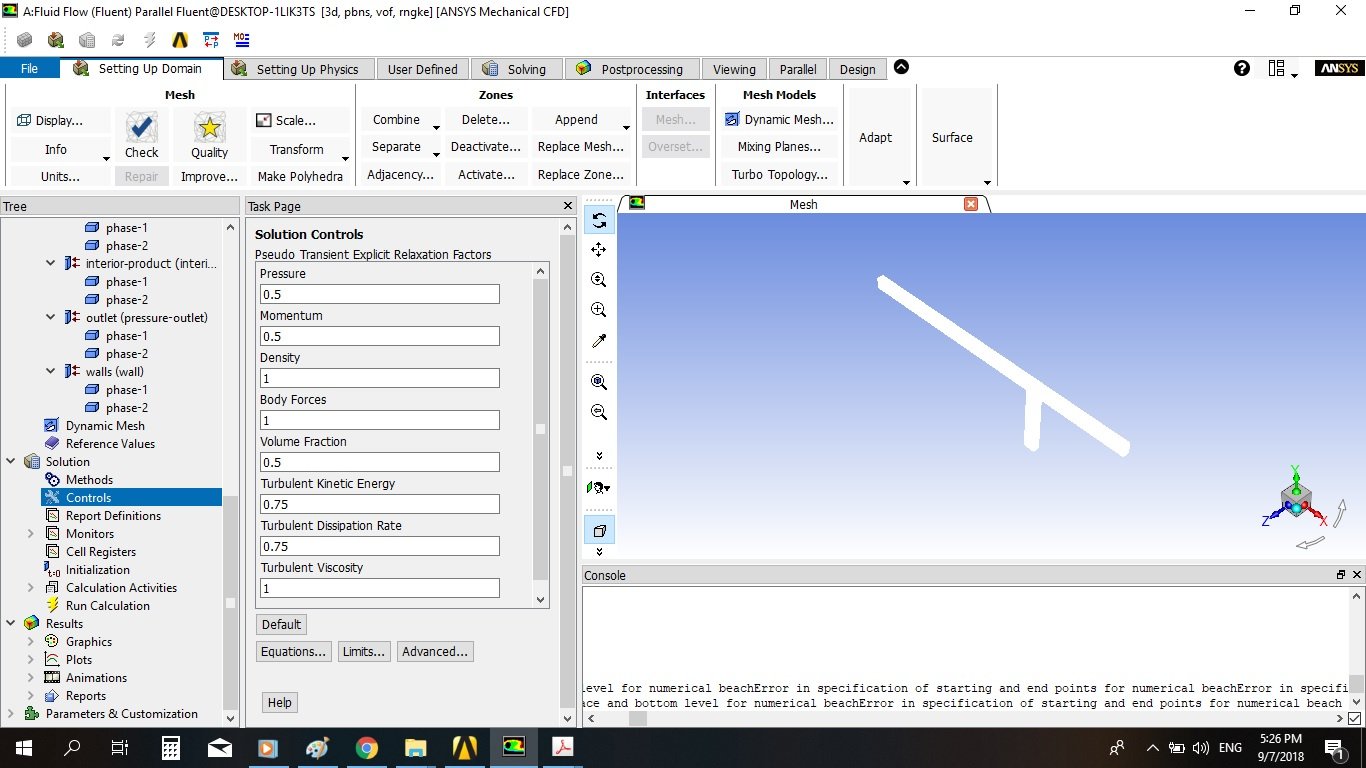
Walaa
Subscriber

Walaa
Subscriber

Walaa
Subscriber

Walaa
Subscriber
i have changes things in different runs before, time scale factor =2, use transit type, reducing courant number and volume of fraction, but all these were in vain and the calculations still stabled as shown.
i am aiming to try different scenarios to validate the program according to an experimental data,

my case is an open channel has 2 inlets and one outlet to check the zone of separation after the confluence.
Walaa
Subscriber
i am sorry for all these things i have shared, but i am beginner using ANSYS and i need to finish my work, thanks a lot and appreciating your help
DrAmine
Ansys Employee
Just read this post and as I won't be able to answer the next days here a comment: your atmospheric boundary is wrong. First of all it has to be a bit far from the free surface and besides that you do not need to use open channel here just assume zero gauge pressure with zero backflow volume fraction. Use oméga sst with damping and switch off surface tension at first. At the outlet do not fore the free surface just let it be from neighbouring cells as I assume you do not know much there. After you corrected all this use transient solver.
Walaa
Subscriber
Thanks abenhadj, i will check that and let you know ![]()
Rob
Ansys Employee
I'd check running with 4 and 8 cores, with about 2M cells 17 may actually be slower as the inter-core traffic may outweigh the benefit of more cores.
I think your domain is a cm or so across, what is the Reynolds Number?
Walaa
Subscriber
Well rwoolhou, I don't get the first part of your comment, but my domain dimensions are as the following, and i didn't calculate Reynolds Number, my Froude number is constant at outlet and equals 0.37 and water level is constant at outlet and i took it the same at the two inlets = 0.296 m

Dilini
Subscriber
I pretty sure you could have solved the issue by now. Just noticed something though. You have given the gravitational acceleration in the z direction and it should be in y I guess.
Ansys Innovation Space 

Join us for this special virtual event on October 18-19, including presentations on MBSE, systems engineering, safety, embedded software, and cyber security. Click here to learn more about this event and register.

This year at Level Up 3.0, users will have an opportunity to hear directly from the R&D experts behind Ansys software.

Check out more than 70 different sessions now available on demand. Get inspired as you hear from visionary companies, leading researchers and educators from around the globe on a variety of topics from life-saving improvements in healthcare, to bold new realities of space travel. Take a leap of certainty and check out a session today here.

The climate crisis is here. But so is the human ingenuity to fight it. Earth Rescue reveals what visionary companies are doing today to engineer radical new ideas in the fight against climate change. Click here to watch the first episode.
Trending discussions 
Top Contributors 
Top Rated Tags 
Source: https://forum.ansys.com/forums/topic/residuals-are-stable-and-dont-decrease-by-iterations/
0 Response to "Simplefoam Time Step Continuity Error is Blowing Up"
Post a Comment